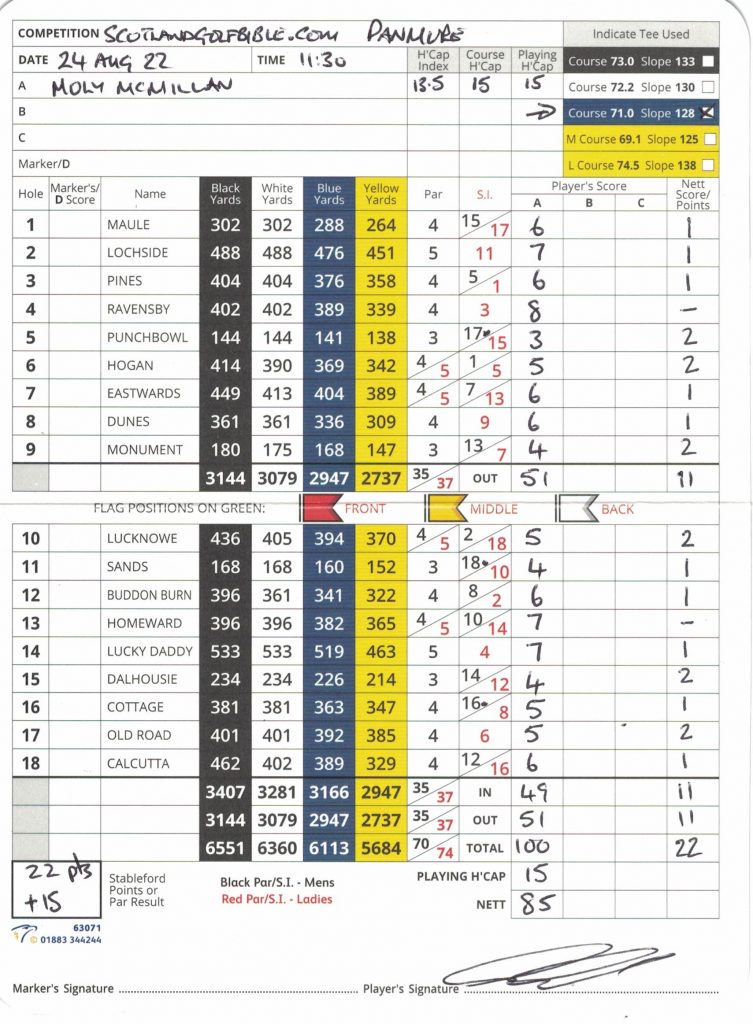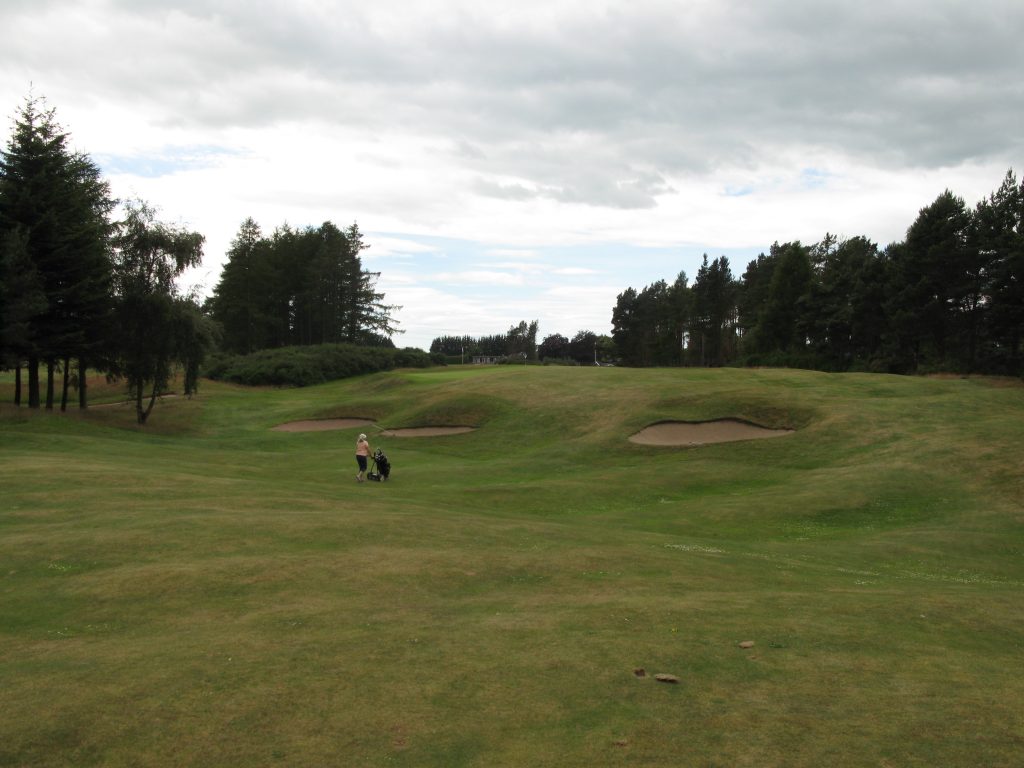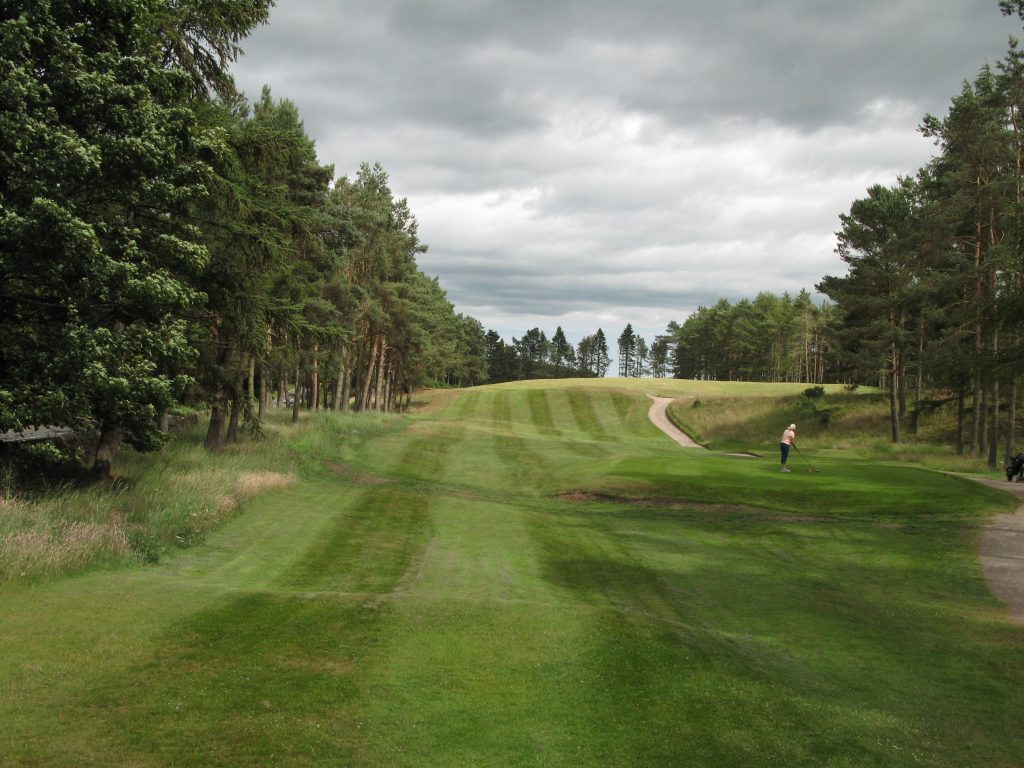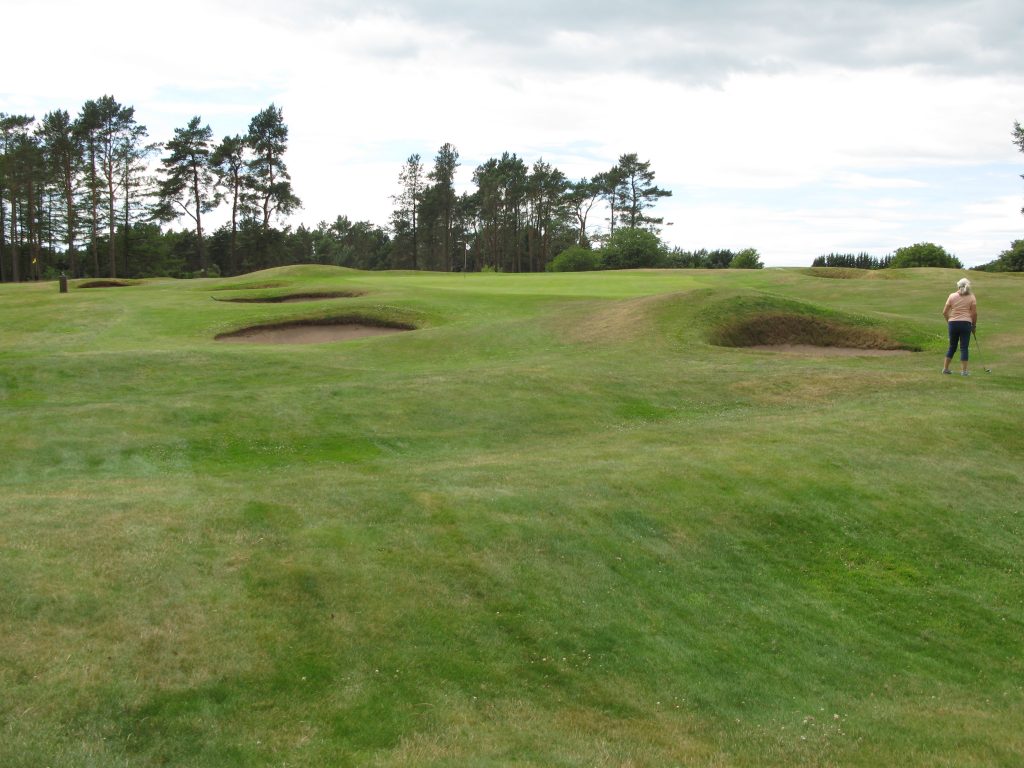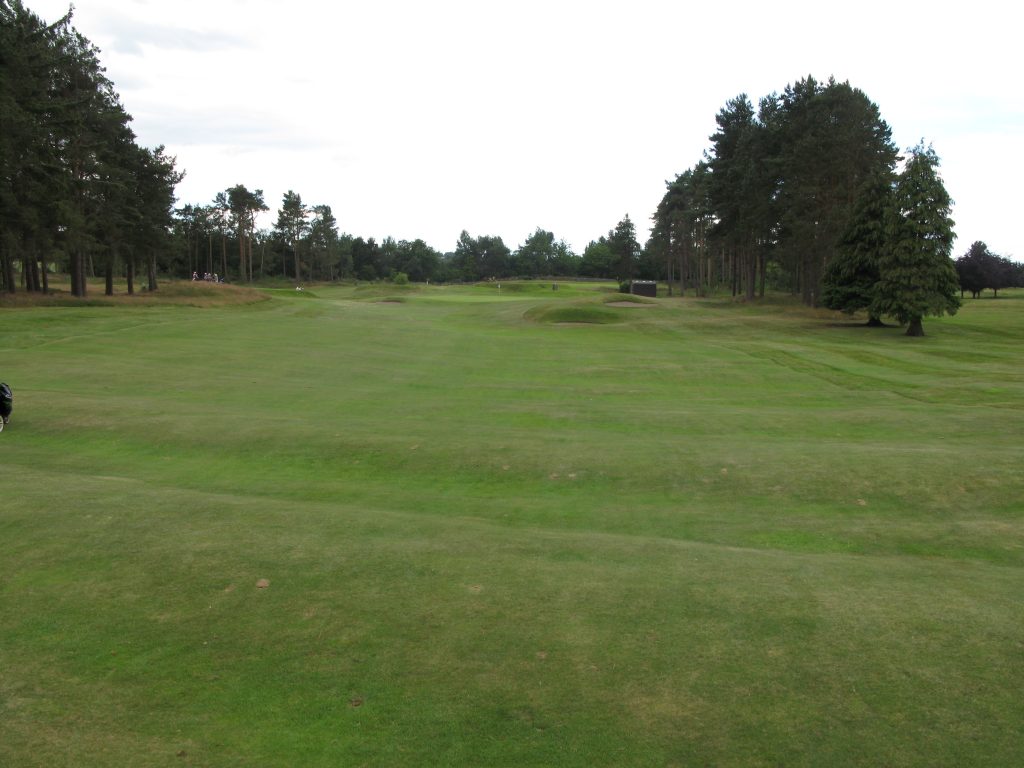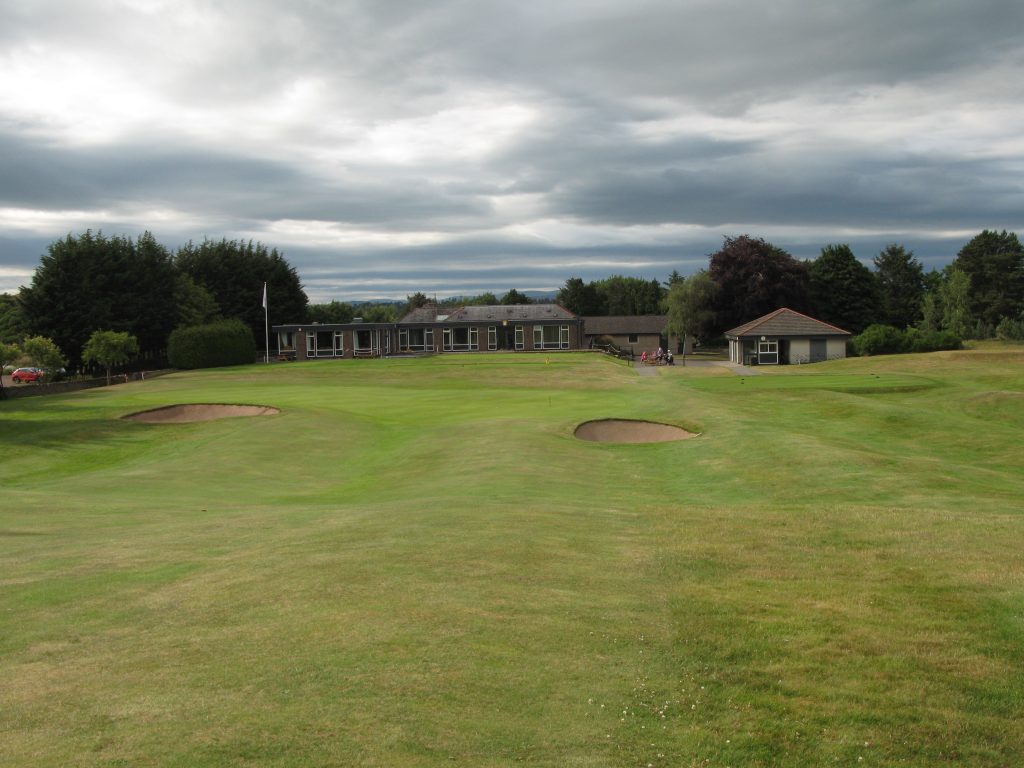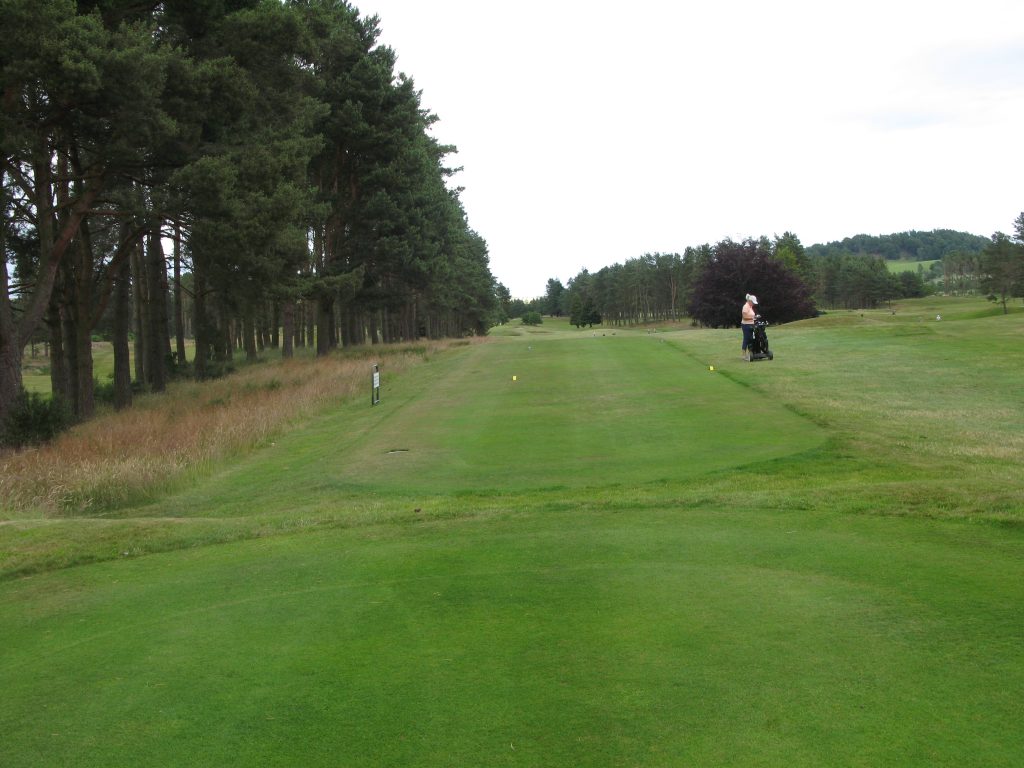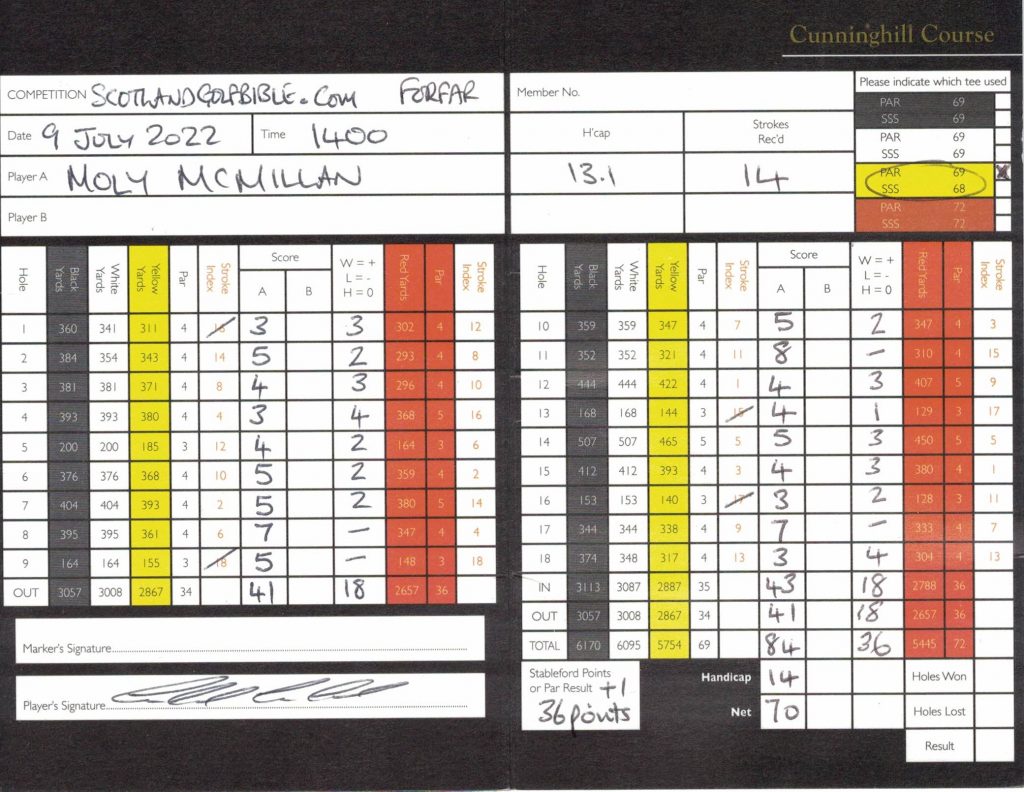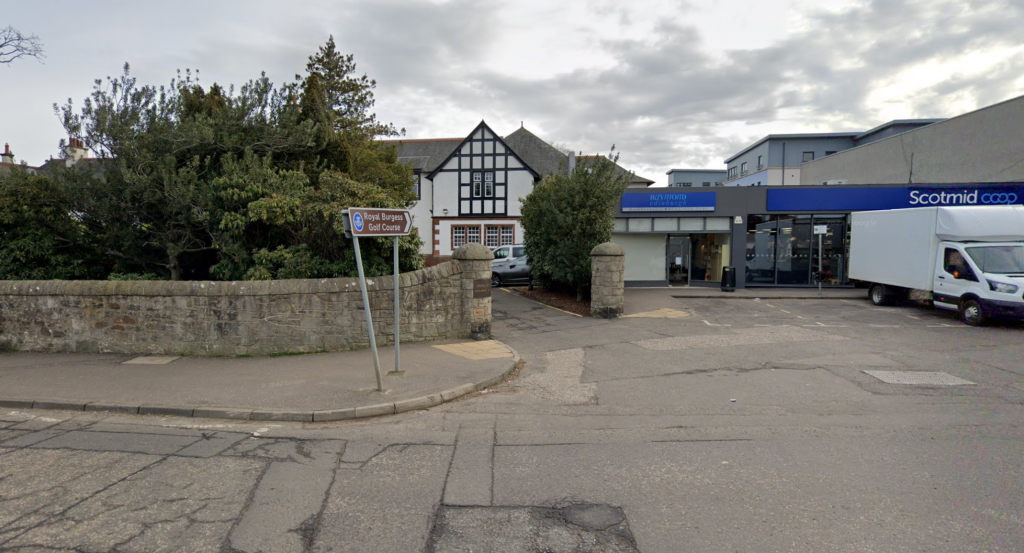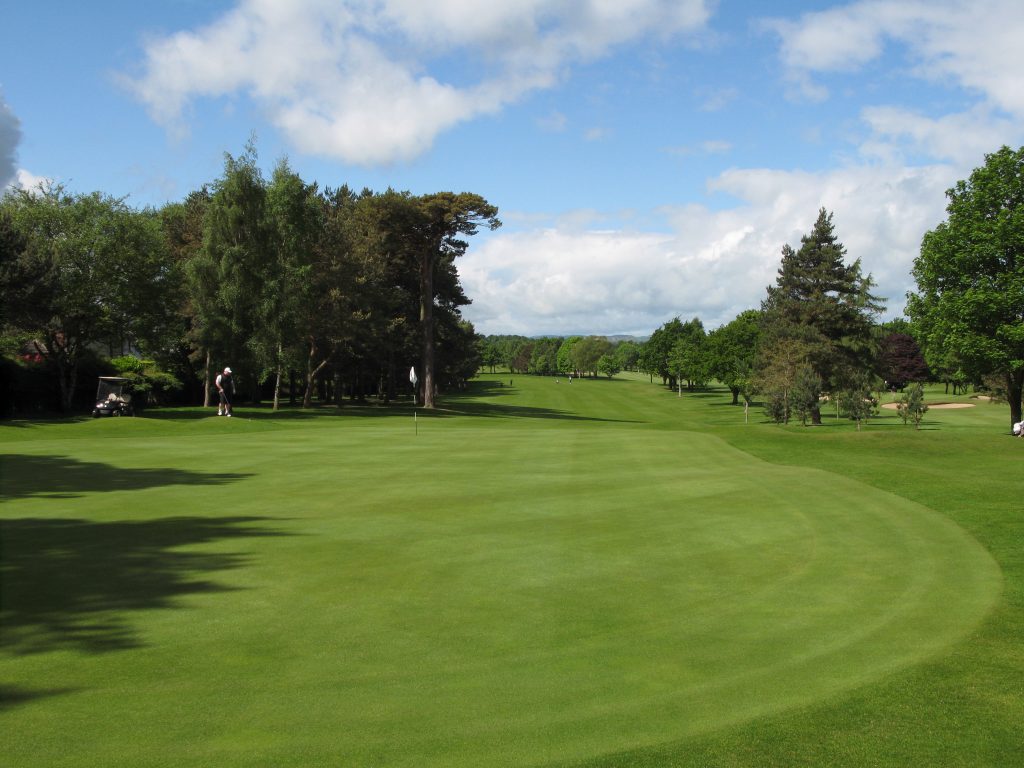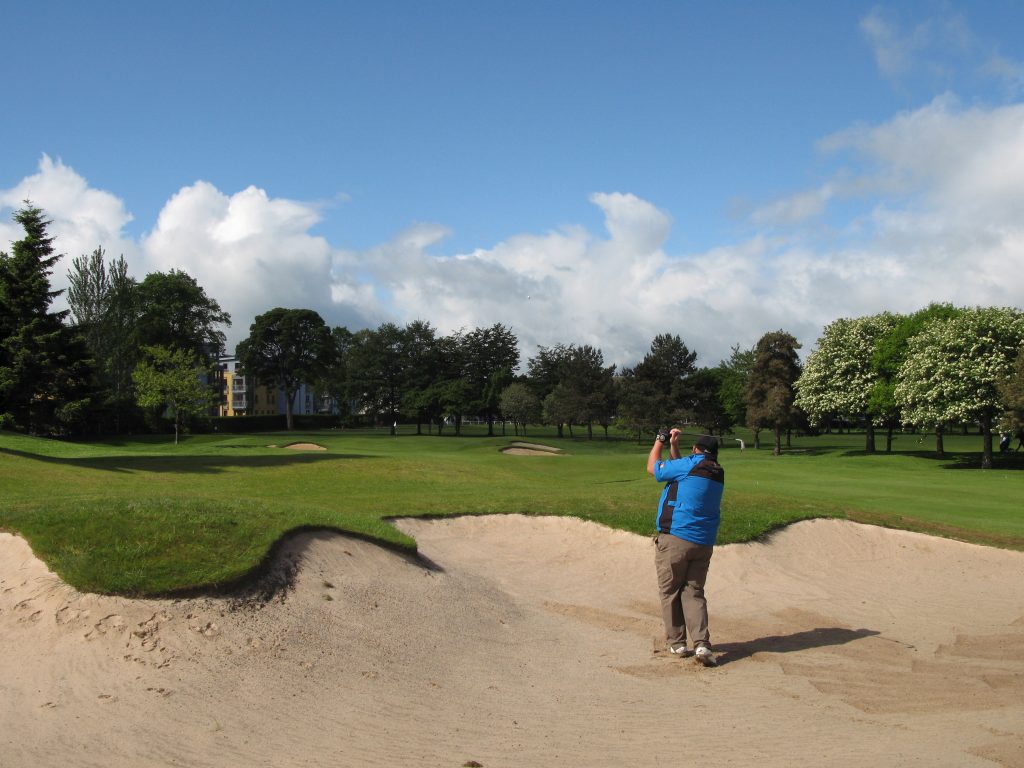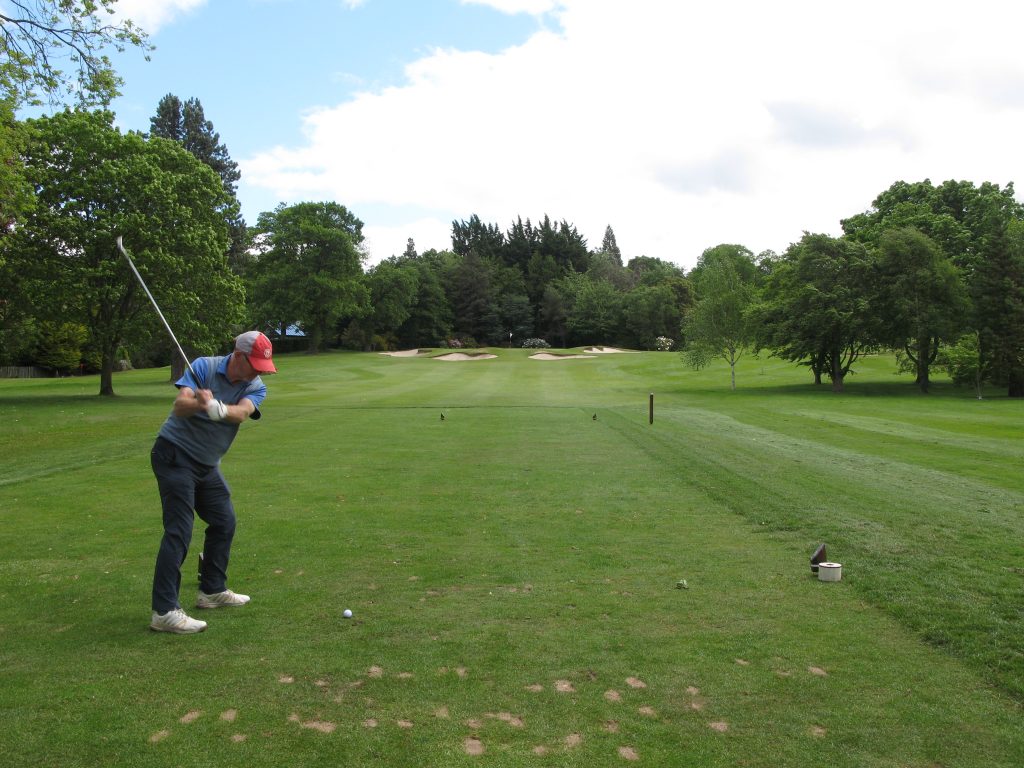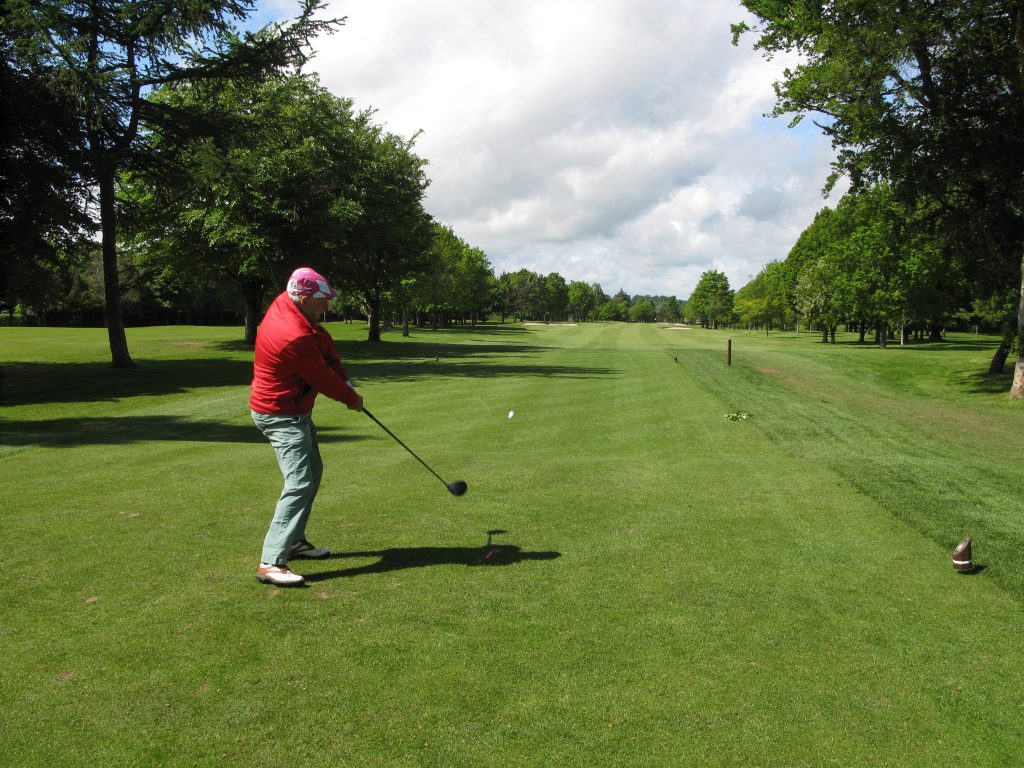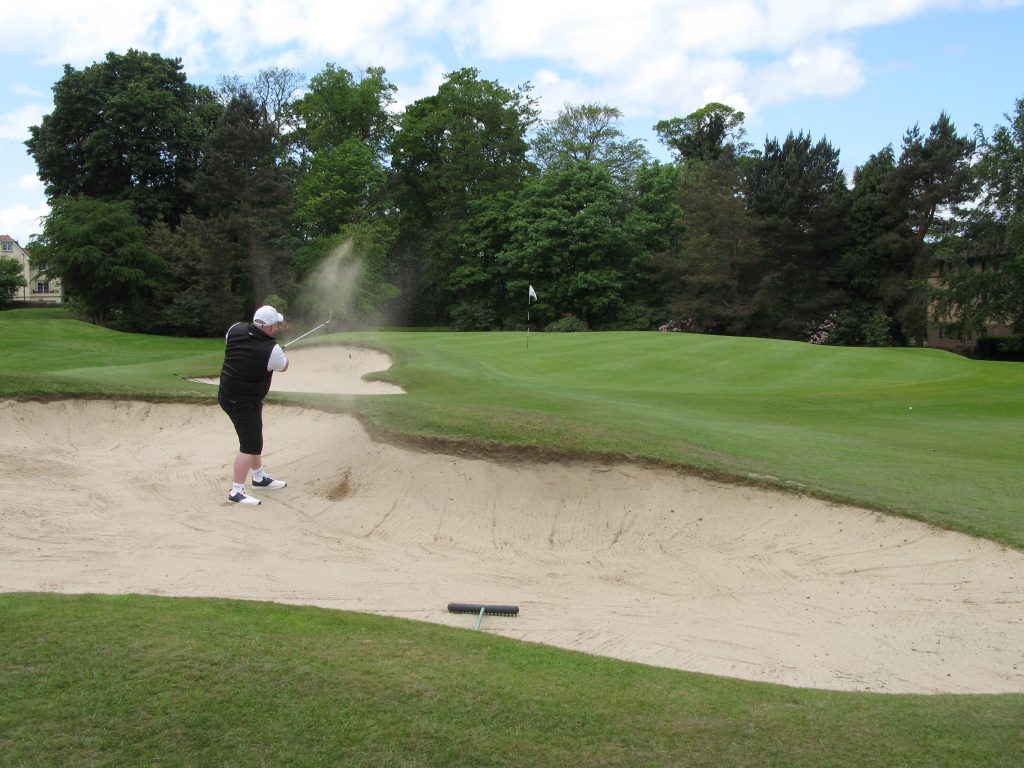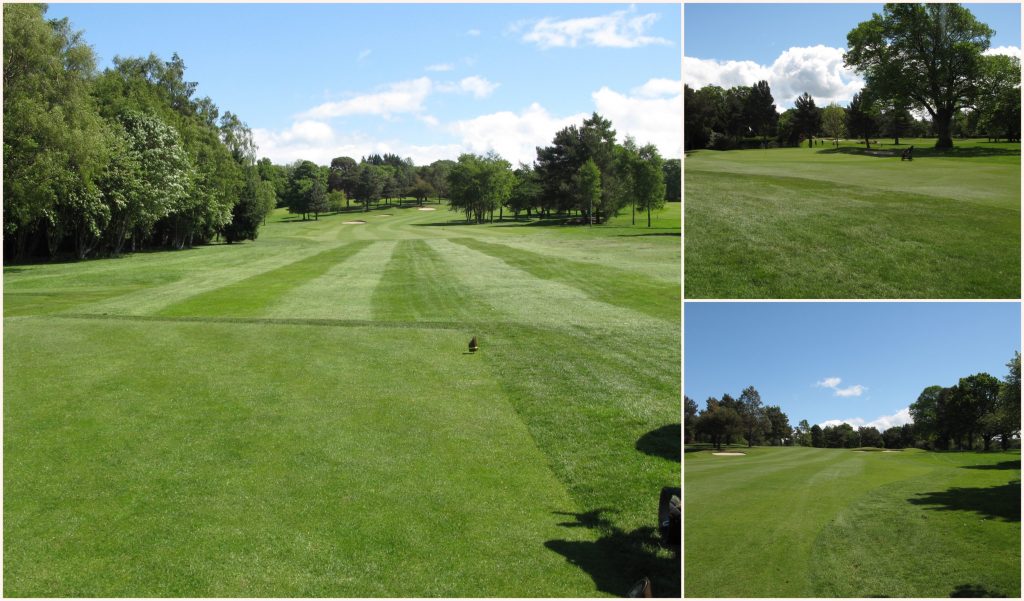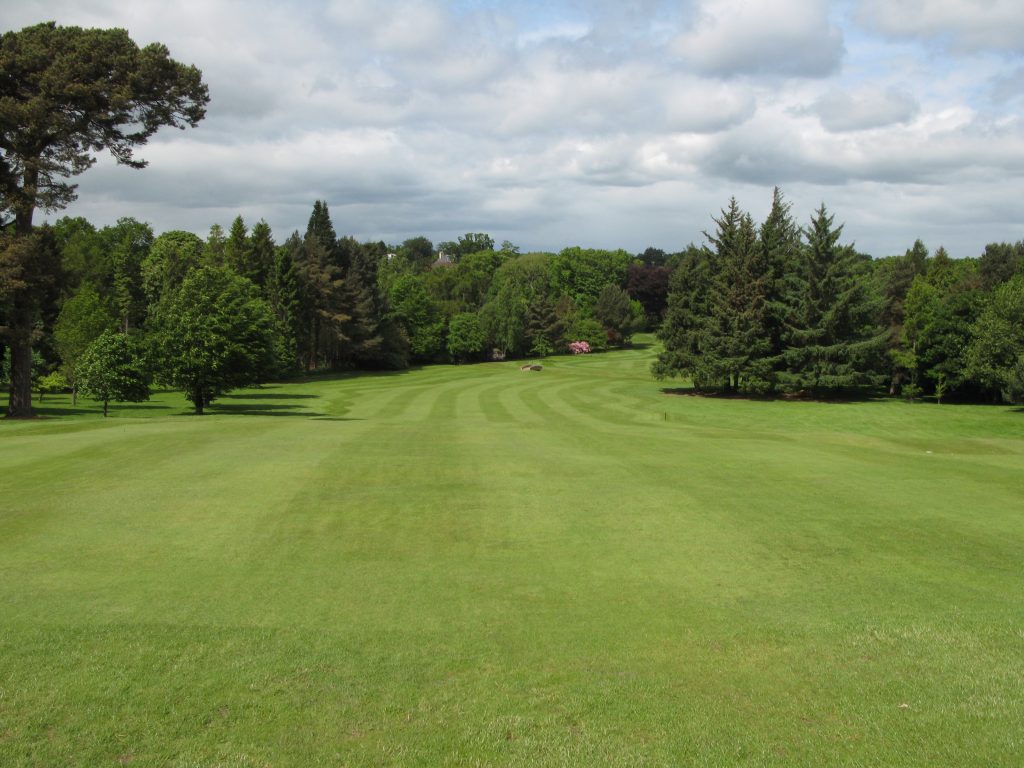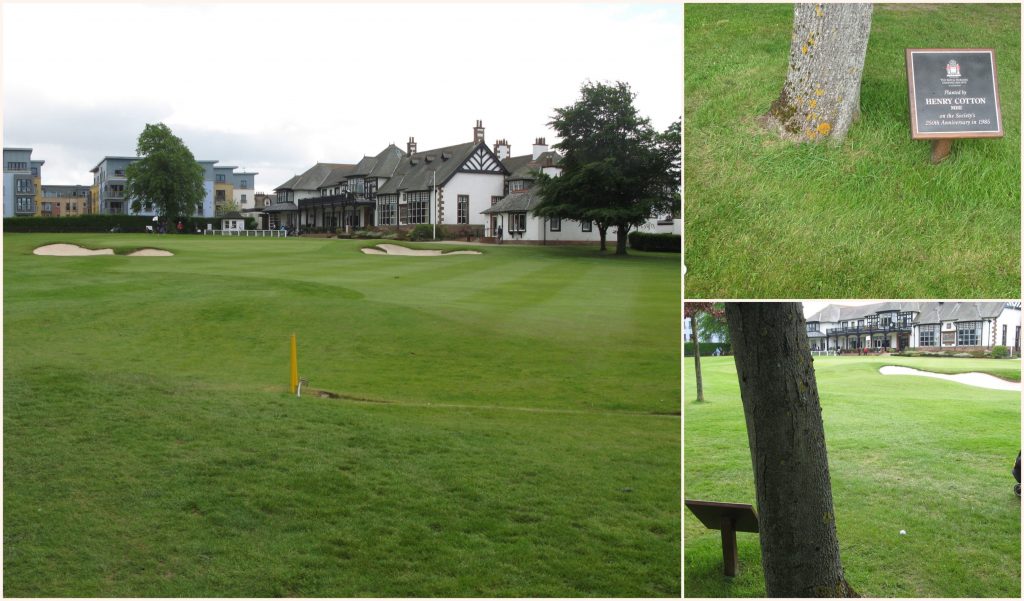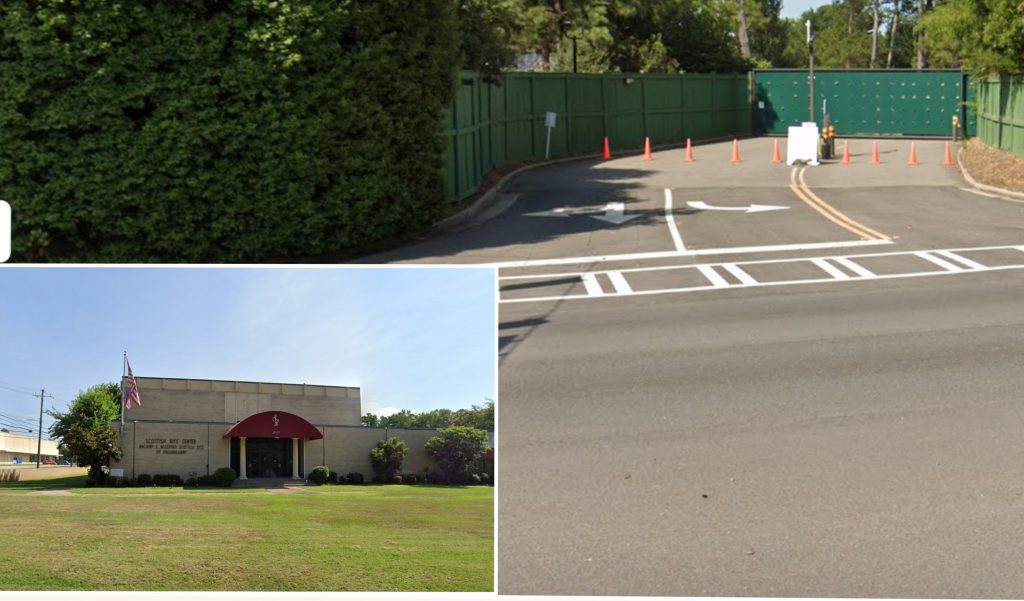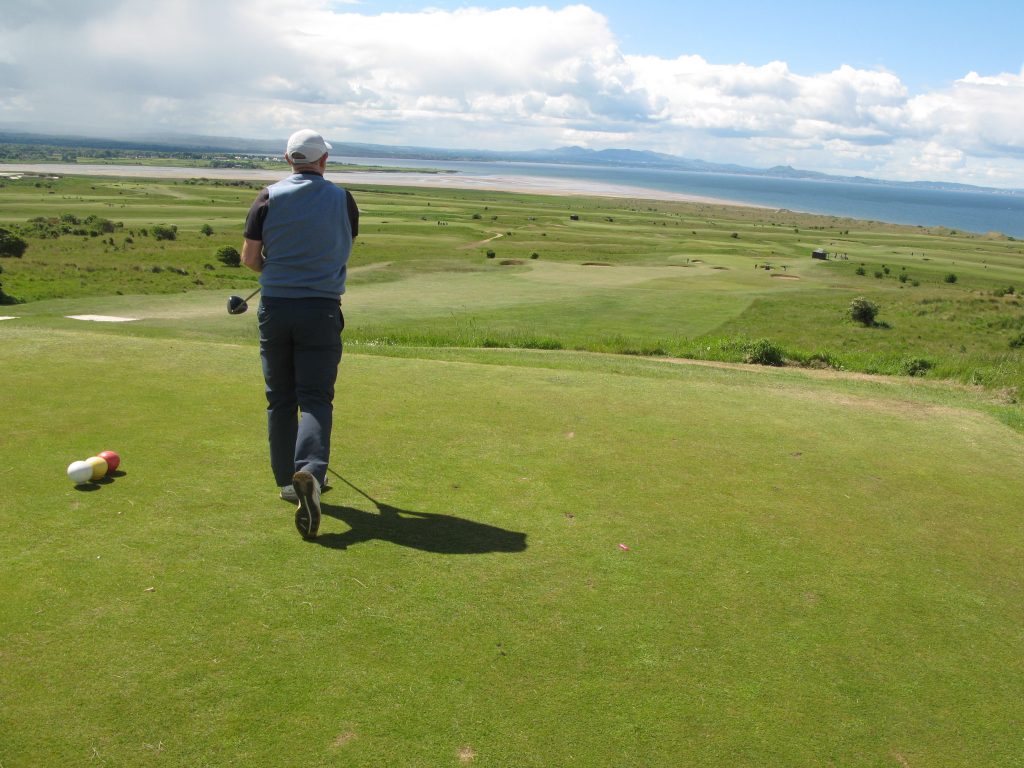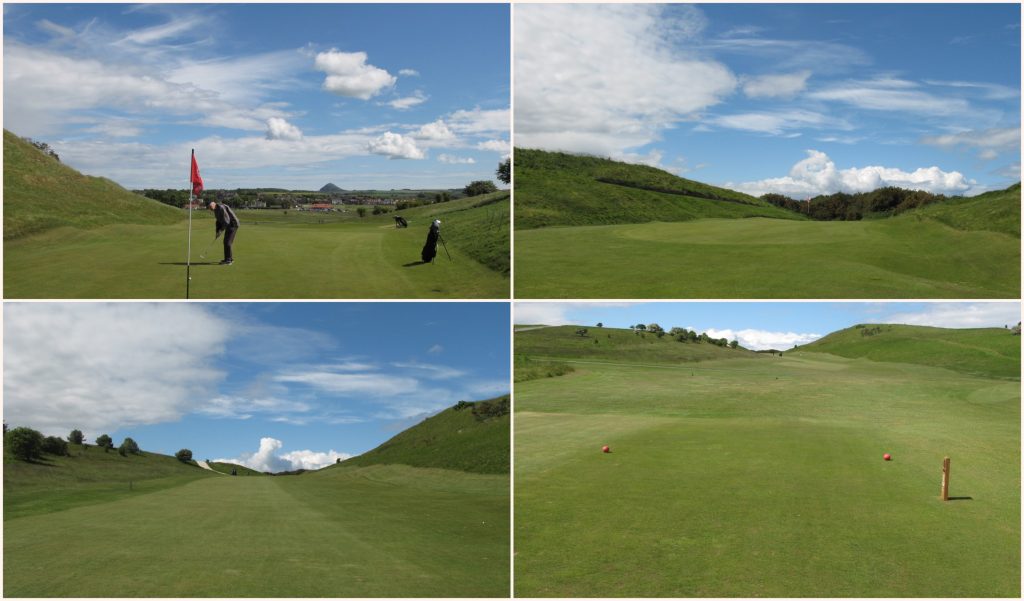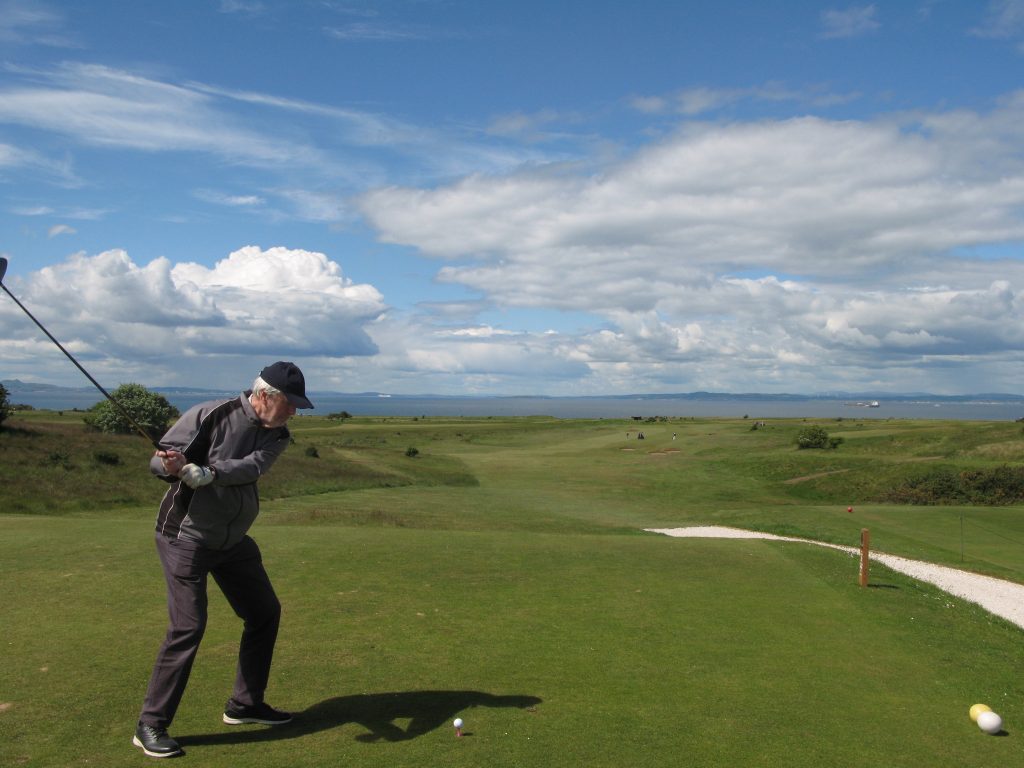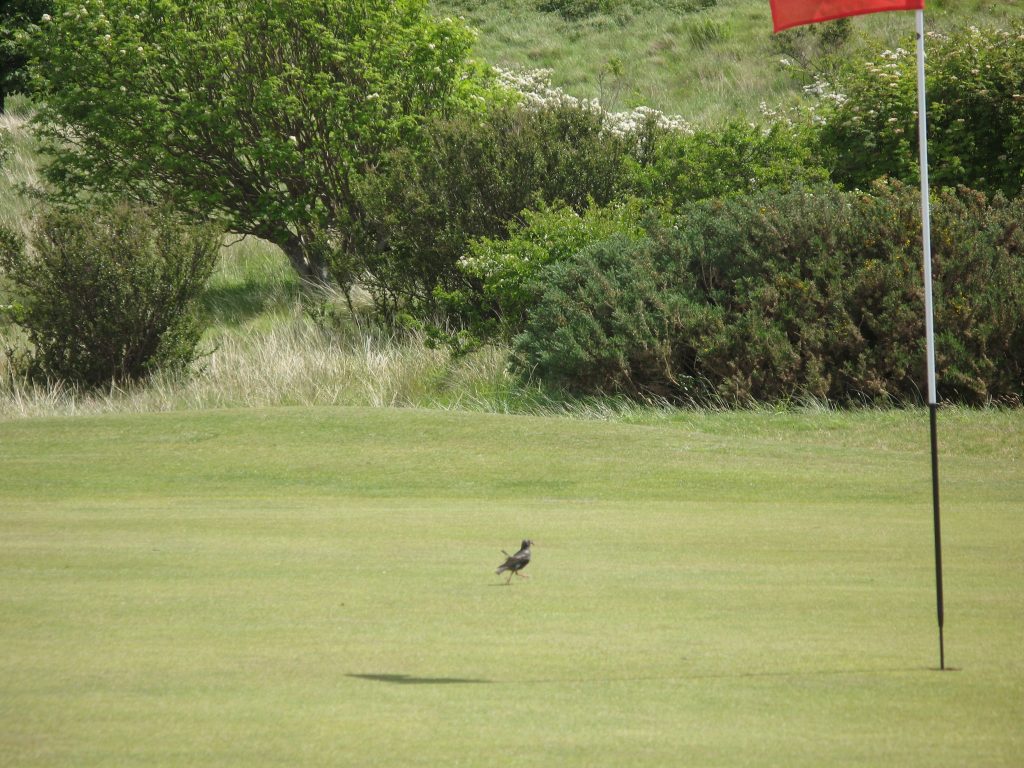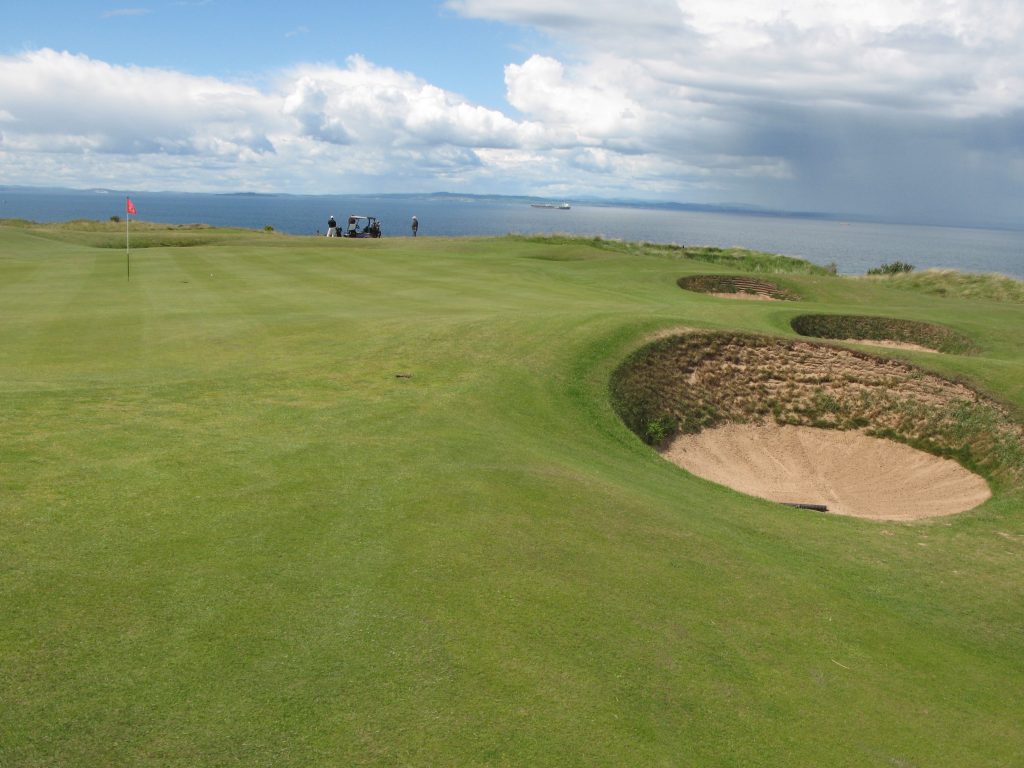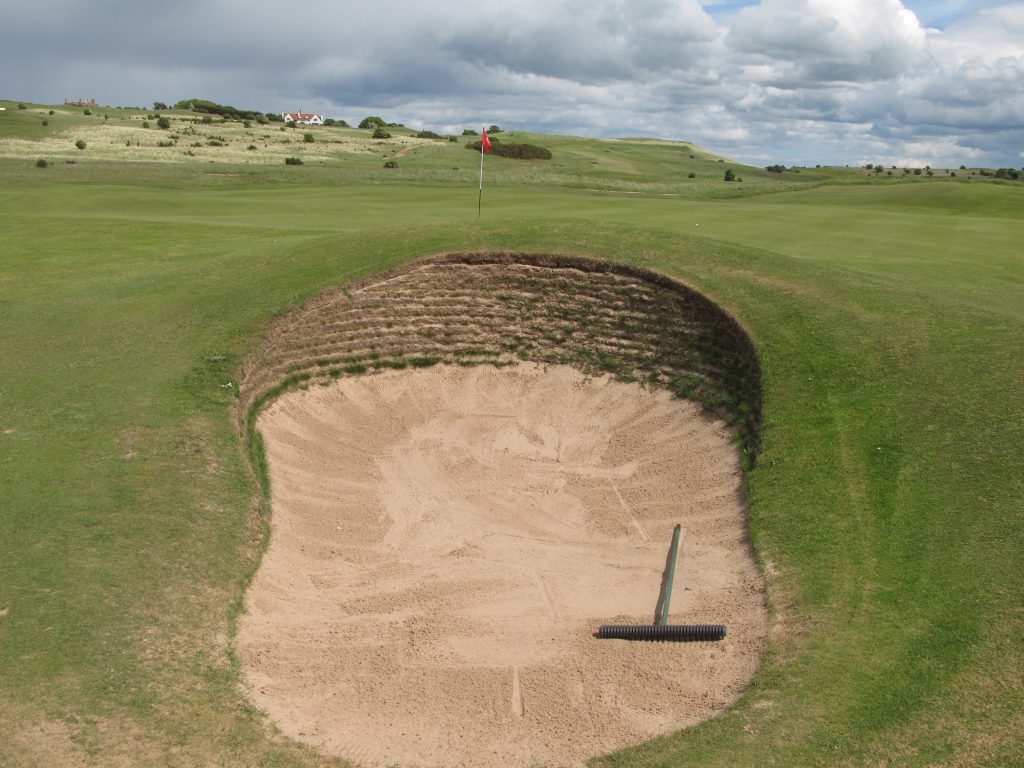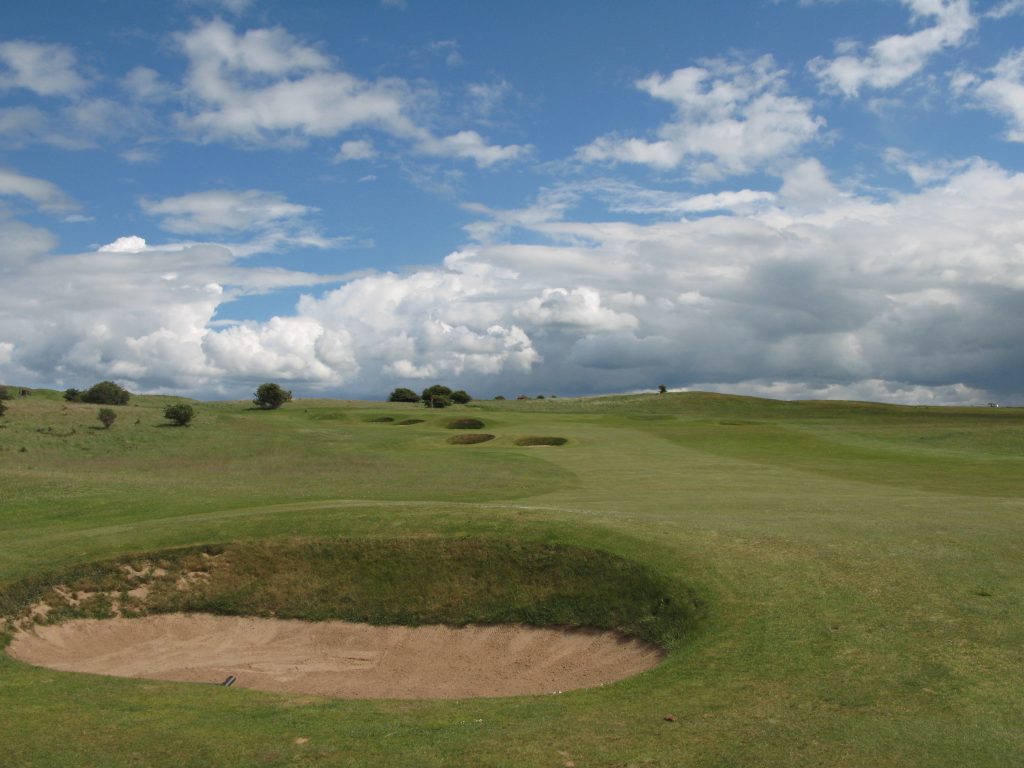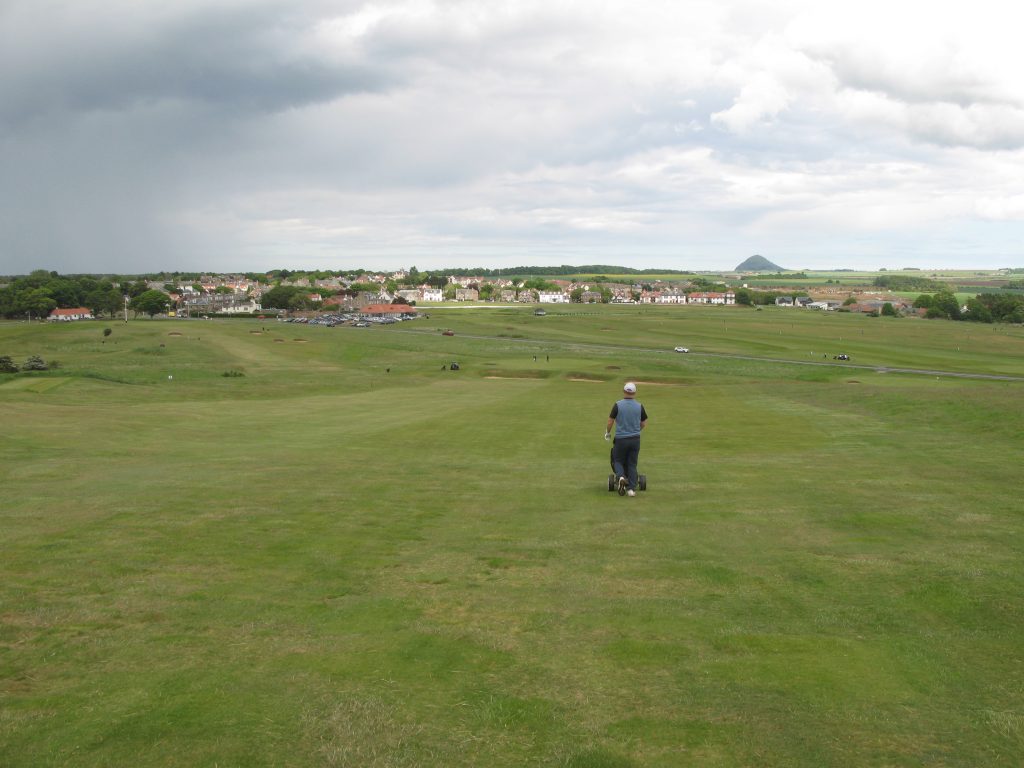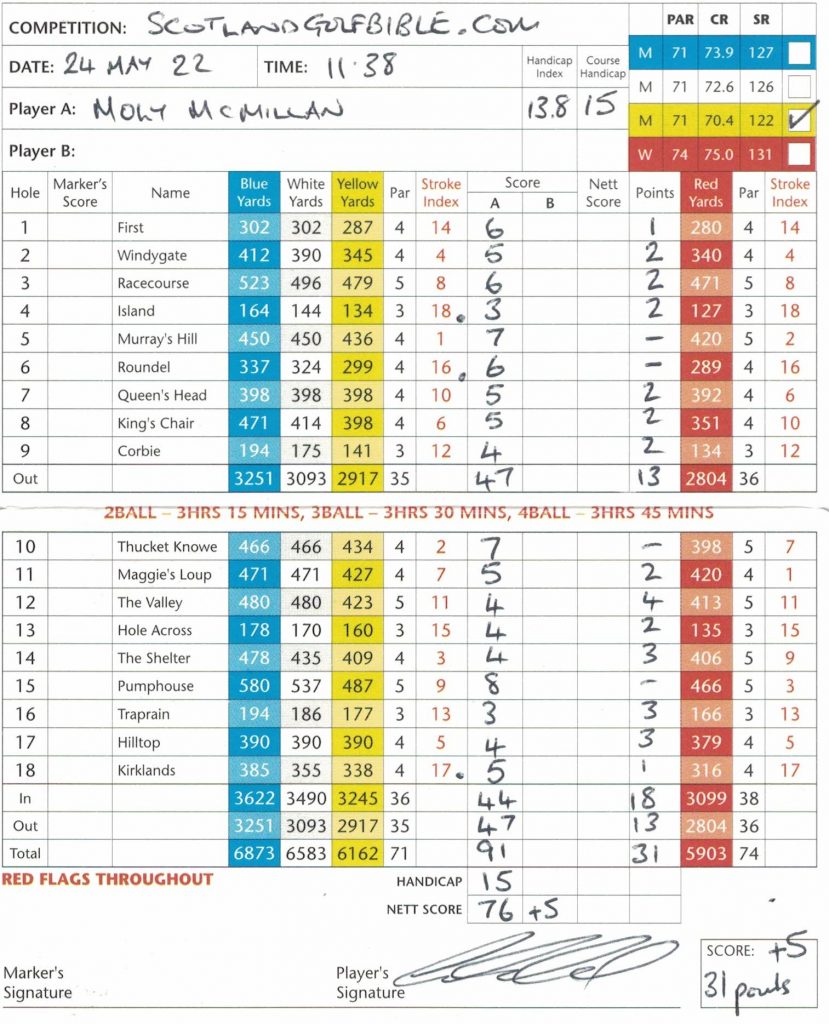Course with a brilliant stretch of holes including a Hogan favourite.
Round £145. Par 70. Course/Slope Rating (blue) 69.1/128. Value (out of 5) – 3.5
Moly’s score – 100
With it’s ‘Hogan’ room and surrounding legend one could conclude Panmure Golf Club’s role as pivotal in American Ben Hogan’s1953 Open victory at Carnoustie.
Yet, in Gene Gregston’s seminal biography, “The Man Who Played for Glory”, the lengthy chapter dedicated to Hogan’s 1953 trip, doesn’t have a word of Panmure. Even the company NCR (National Cash Registers) gets a mention for accommodating Hogan in Dundee’s Taypark House.
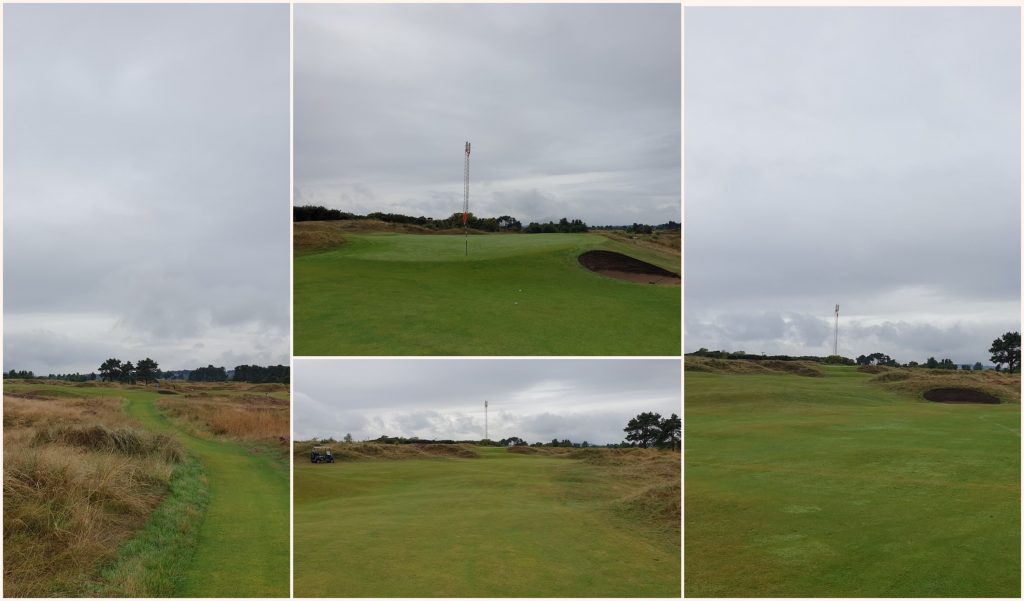
These contrasting perspectives intrigued me. So many Hogan myths exist, there are books and podcasts dedicated to them. Had I stumbled upon a myth? Had Hogan really ‘played’ here?
There are no photographs of Hogan playing Panmure, although several of him on the Carnoustie Championship and Burnside courses. Other than the Panmure Club’s website I couldn’t readily uncover corroborating contemporaneous evidence. The more I researched Hogan, the meticulous preparer for tournament golf, the more skeptical I became of the story. Hogan was not on holiday, surely he would not have played Panmure, if he could play at Carnoustie. Henry Cotton’s article “Reflections of the 1953 Open”, focused on Hogan and his ‘ten days of preparation’, but again no mention of where.
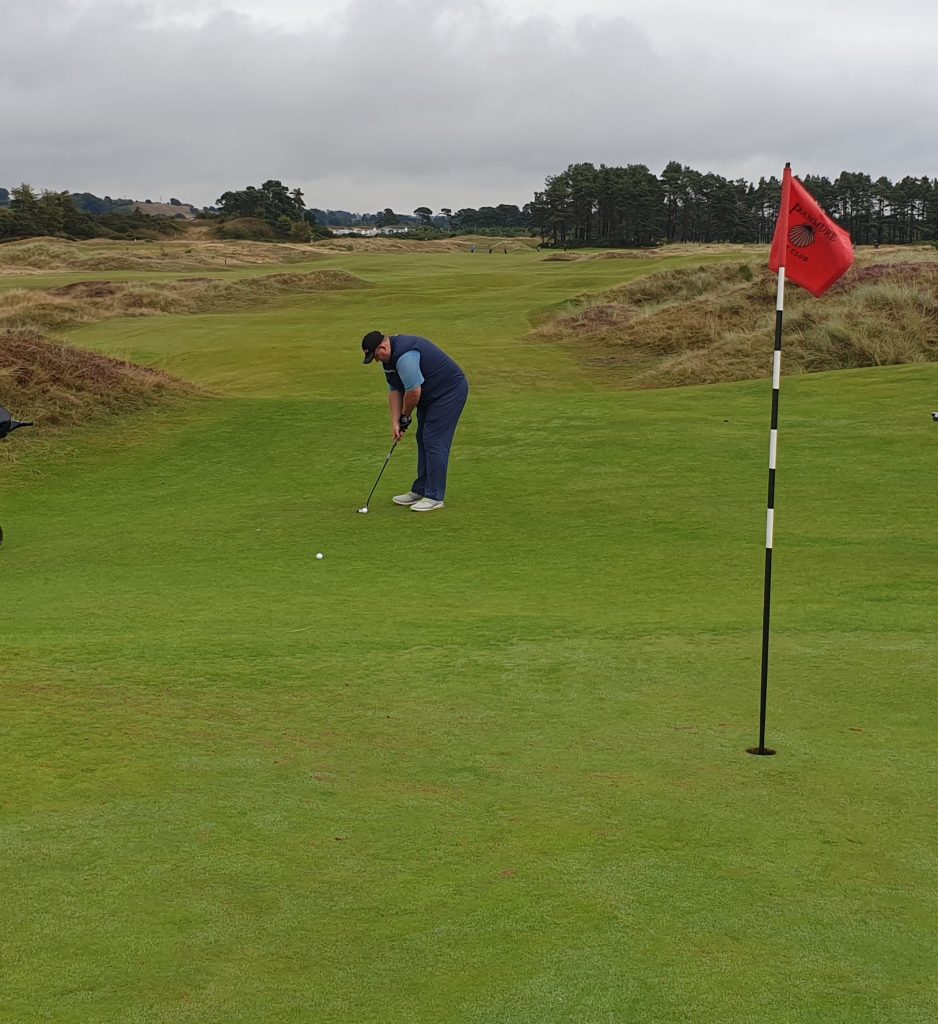
Researching Gregston’s writing finally uncovered a ghost written article for Ben Hogan, in one of America’s oldest institutions, The Saturday Evening Post. In ‘The Greatest Year of My Life’, published on 17th Oct 1953, in Hogan’s own words there it was…. ‘Barry’. But it was only by a quirk of fate.
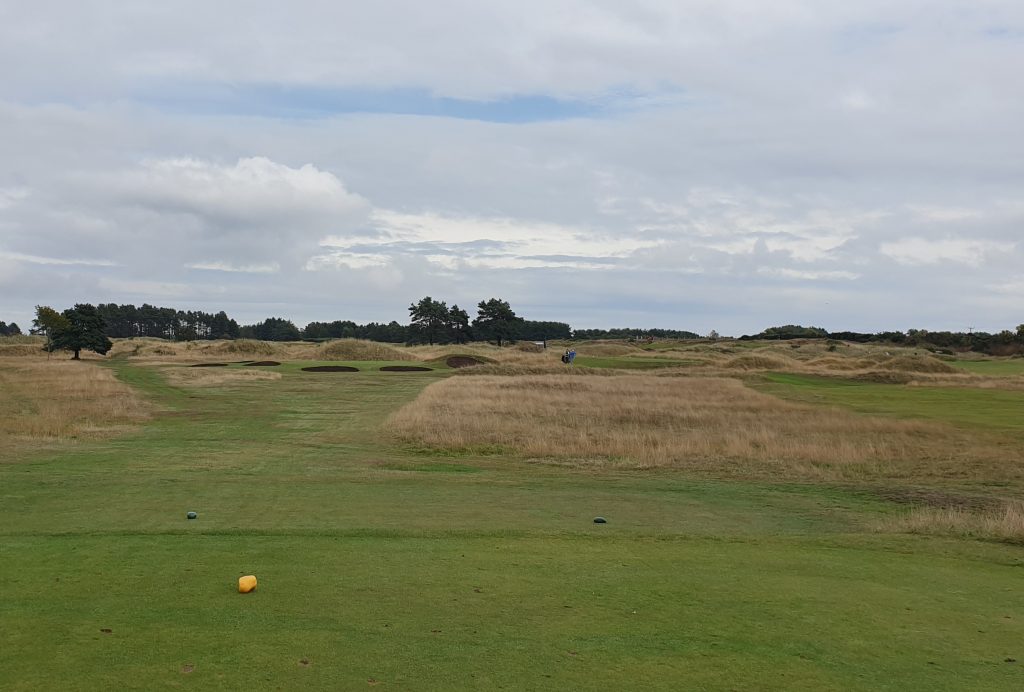
Panmure Golf Club originated in 1845, as one of several clubs using Monifieth Links; the Panmure Ladies Club, of which my wife is a member, still play at Monifieth. Due to golf’s growth the Panmure Club built the Barry course, which is midway between Monifieth and Carnoustie. Initially 9 holes laid out by Old Tom Morris, then 78 years old, it was called Barry Links or Panmure Barry, names still used by locals. James Braid remodeled the course in 1922.

Panmure is one of Scotland’s ‘posh’ and, until 2018, ‘men only’, clubs. One may not realise nearby Broughty Ferry, home to many of the initial Panmure members in their grand houses, was once ‘one of the richest suburbs in Europe’, due to the then industrial might of Dundee. The area’s economic reach still highlighted by Panmure’s impressive clubhouse, a replica of Calcutta Golf Club, a vestige of the British Empire.

The golf course is exceptionally maintained to professional playing standards. It is a classic out and back clockwise course, with any OOB being on the right. It plays into the prevailing wind on the outward 9 (except for the 7th which doubles back), so I would suggest trying to ensure you stay in play going out, as there will be opportunities to catch up coming home.
The course rates very high nationally, but for me it starts and ends rather tamely. What it does have is an outstanding middle section of holes, starting from the par three 5th, before one of Scotland’s greatest holes, the par four sixth.
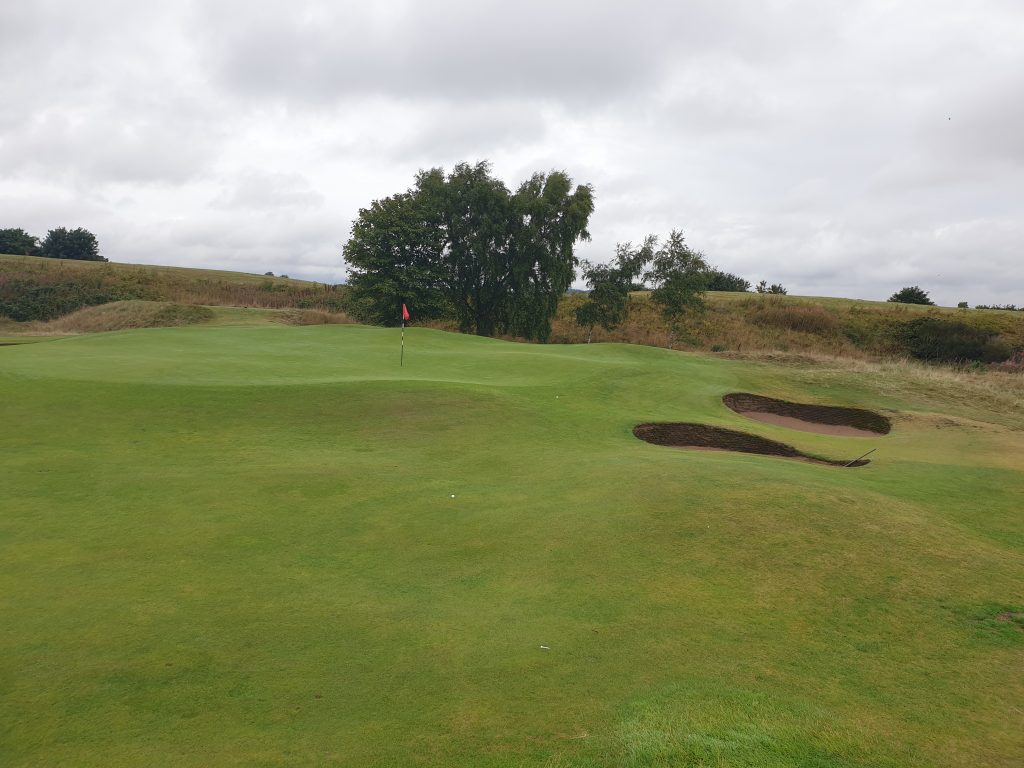
The 6th, ‘Hogan’, is spoken of as Hogan’s ‘favourite Carnoustie hole’, and it’s understandable why. It is a slight dogleg left, with the approach played directly into the prevailing wind, meaning the tee shot is about the worst wind direction for anyone other than the very best ball strikers. Although only 360 yards from the blue tees (Panmure’s equivalent of ‘yellow’), with a blind tee shot into a larger than seen landing area, it becomes nigh impossible in any high wind, as the approach plays to a plateau green through an ever narrowing channel. It has mesmerising natural framing. Like many great holes it’s risk-reward, as the fairway narrows at full driving length. Play it as an easy par 5, to avoid double bogie or worse. The 6th is also the part of the course with natural grassy hummocks, characteristic of this coastline.
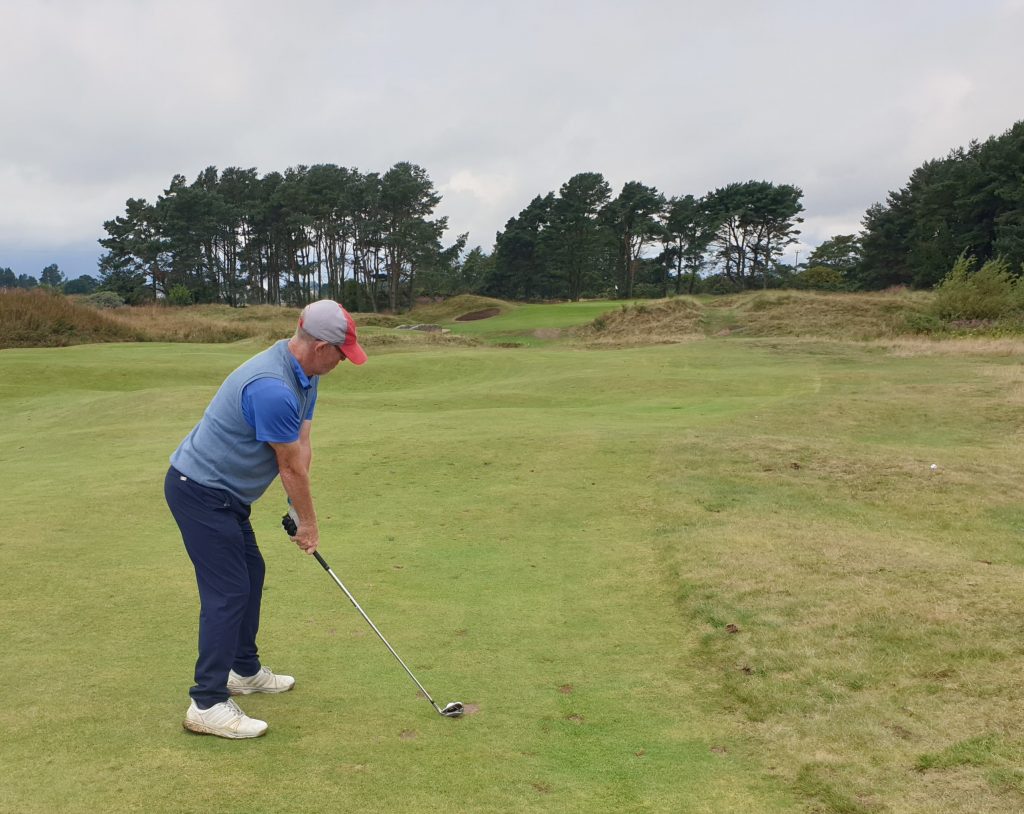
How many great holes does it take to make up a great course? That’s a question worth thinking about, especially when one is pondering value? As a Dundonian, I played Panmure several times in the 1970s and 80s, when the price was relatively much cheaper. As with many ‘well heeled’ Scottish clubs nowadays, visitor prices have focused on the more wealthy visitor fees on offer, aided in Panmure’s case by the closeness of Carnoustie. At £145 for a summer season round, I think it’s overpriced, hence my score of 3.5.
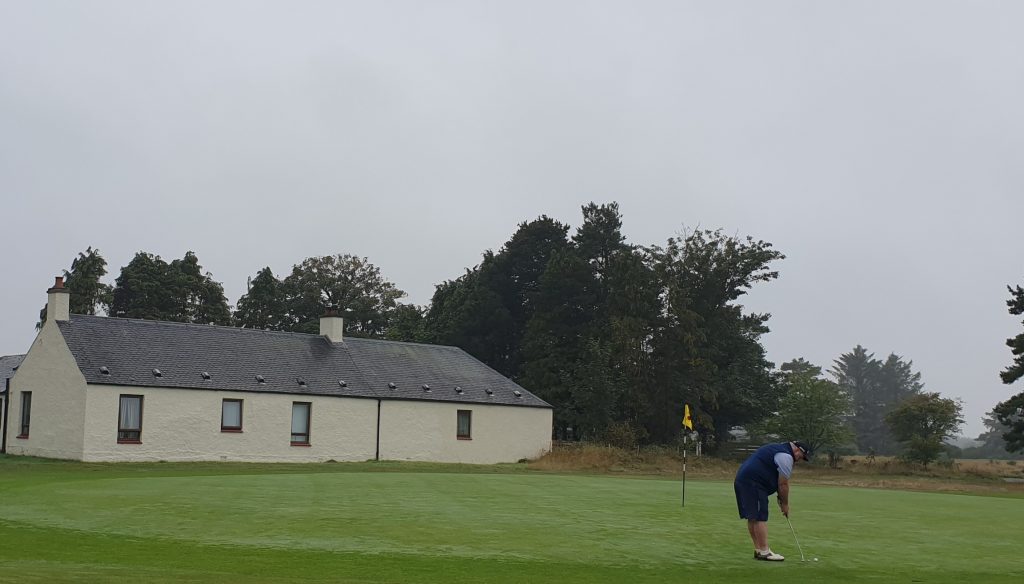
Returning to the Hogan story, here’s what my investigation concluded. He started off practicing on Carnoustie, as was his plan, but found that its practice area was located next to the Barry Buddon military firing range. For Hogan, this was too noisy! So he then practiced for “an hour to an hour and a half each day at Barry” (Hogan’s words), using the 17th fairway and green (which he had cut shorter), as his practice area. As he was adapting to the smaller UK ball he was focused on his ball striking and yardages. He then went on to Carnoustie each day for his practice rounds and, late into the evenings, meticulously measuring the course, for key distances, as a modern caddy would do for his professional. He played 3 balls on each tee (to left, centre and right of the fairway). He missed one fairway in 4 rounds.

Given that he was practicing at Panmure for about a week, for about an hour a day, I think it’s highly unlikely he ever played a round at Panmure. Why would he, when he needed to learn Carnoustie’s monstrous 7,200 yard course.
As to the story of the 6th hole being Hogan’s favourite? Well, intriguingly, Carnoustie Championship course’s 6th hole is also called ‘Hogan’, with its famed ‘Hogan’s Alley’ describing a portion of land created between a loop of the Barry Burn. Might he have been confused? Nonetheless, both 6th holes are candidates for inclusion into a list of great Scottish holes.
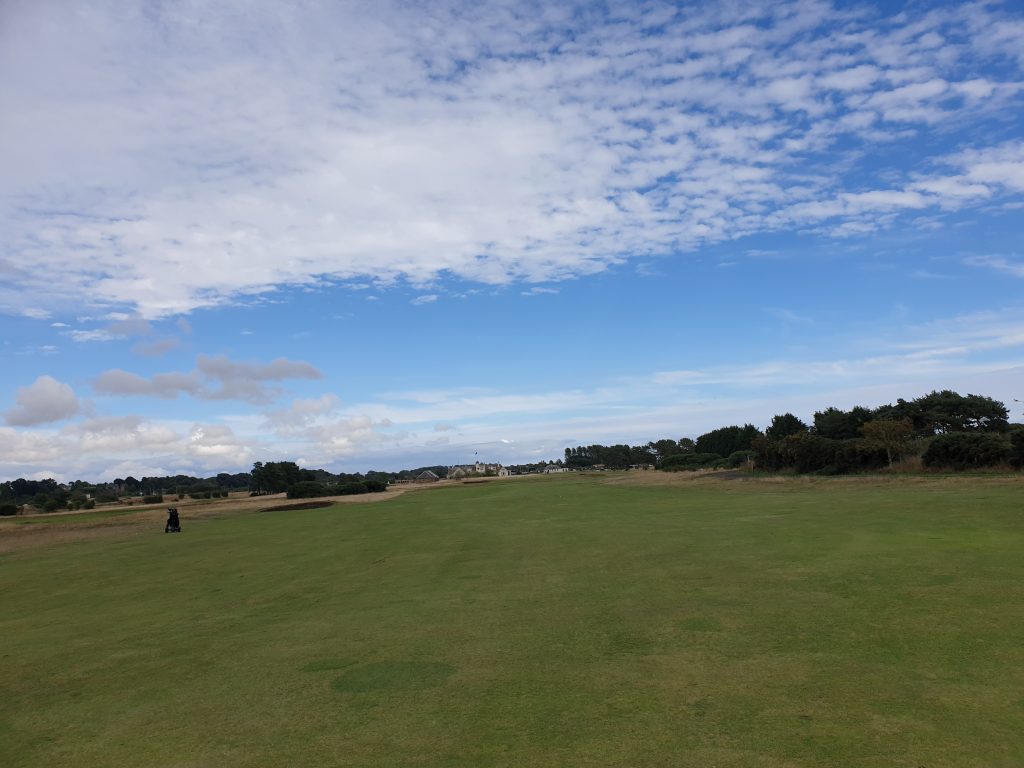
Panmure is a great course, full of history, with a brilliant stretch of holes; however, other than for the soldier’s firing on the range, the ‘Hogan’ room at Panmure Golf Club would need another name.
Interestingly, there are still no red tees at Panmure.
Facts:
Course Type: Links
Par 70 (2 par 5s, 12 par 4s, 4 par 3s)
Distance (blue): 6113 yards
Moly’s Gross score: 100
